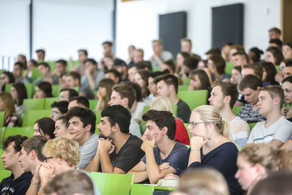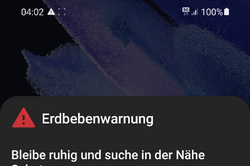Introduction of DE-ALERT: Case study of Cell Broadcast Service accompanied by lab demo
- Teaching News
- Lectures
- News

Currently, there is no universal warning system available for the German population. One solution to this problem will be cell broadcasts (the so-called DE-ALERT service), which can be used to warn all subscribers currently connected to a cellular cell without having to install a specific app such as NINA and KATWARN. Therefore, one of the advantages is that a larger share of the population may be reached. Moreover, the warnings are not simply push notifications but on-screen notifications which may optionally be accompanied by vibrations of the smartphone and an audio message. A first test of the functionality shall take place in 2022 during the German nationwide altert day: "Warntag 2022". The exact date has not yet been announced. While the call broadcasting technology is generally mature, recent press coverage indicates that the introduction in Germany faces some interoperability problems due to different smartphone operating systems and software versions.
To practically illustrate how such a service would work on real-life smartphones, Prof. Wietfeld discussed the technical background with his students and provided a brief live demonstration of such cell broadcasts within last week's Mobile Radio Networks 2 (MRN2) lecture. Using a commercial cellular network emulator, a current Android smartphone was placed in a so-called shielding box which is connected via HF cables to a LTE cell. After configuring and triggering the warning messages within the network emulator, the smartphone reliably displayed CMAS messages and ETWS notifications on top of other active apps on the smartphone once they were sent out by the network. At the same time, it generated sounds and vibrations or displayed the specific warning message of the network operator.
As part of its technology monitoring within the Competence Centre 5G.NRW, the CNI team further investigated whether current 5G-enabled smartphones are also able to receive Cell Broadcast Messages via 5G networks. Thus, CNI recreated such a system with an updated network emulator smartphone experimental setup. Similar to the 4G demonstration during the lecture, the same behavior was observed for 5G Non-Standalone (NSA).
Although the demonstrations focussed on selected smartphones types only and was not meant as an in-depth study of potential interoperability issues, it was shown that 4G as well as 5G cell broadcasts are generally feasible and suitable to extend public safety provisions beyond the voluntary use of warning apps.






